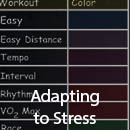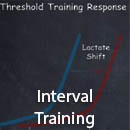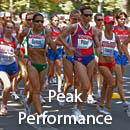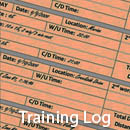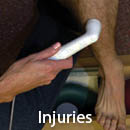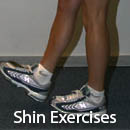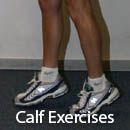Race Walking Training
Strength Training
Introduction
The single best form of cross training for race walkers is strength training. Research indicates that endurance athletes improve their race times more rapidly when they add strength training to their conditioning plans. For race walkers and others concerned with speed and stamina, the key to maximizing performance is enhancing strength without dramatically increasing weight and bulk. To prevent such bulking up or enlarging muscle mass when training with weights, my exercises rely on light weights lifted through numerous repetitions.
I entitle the chapter Strength Training, not Weight Training, to emphasize the process of building strength to improve power and reduce the chance of injury. Some exercises utilize hand weights or machines; others rely solely on supporting body weight while working a particular muscle or muscle group. Both types of movements, in proper combination, prove very effective contributions to race walk training.

Sets, Repeats, and Circuit Training
Strength training workouts are generally performed in sets, or repetitions of one particular exercise. Each repetition involves raising and lowering a specific weight through a predetermined range of motion. My workouts typically require completing 10 to 15 repetitions of each exercise per set, for a total of three sets. Why the range of 10 to 15? Because each time we begin exercising at a new weight level, we face an increased workload that can prevent completing the full 15 repetitions for all three sets. Proper training means never setting the weight too high to complete at least 10 repetitions per set. Once we build up to 15 repetitions for all sets, we increase the weight by 2.5 to 5 pounds at the next workout.
I usually recommend taking a break for thirty seconds to one minute after each set of exercises. Alternately, circuit training provides an option to completing all the sets for one exercise at a time. Using this method, you rotate from one exercise to another, performing one set of each individual exercise with little or no rest in between each set. After you complete each circuit, take a rest of up to five minutes and then repeat the entire circuit two or three times. By circuit training quickly, you add an endurance element to the regimen.
General Rules of Thumb
When strength training, the order in which you execute the exercises matters. Always start with the legs and then proceed to the back, chest, shoulders, and arms; finish with the core, your stomach.
We perform exercises using either one or two limbs at a time. Often novices gravitate towards using both limbs simultaneously—for example, performing a leg extension with both legs at once. This approach creates problems because our strength usually varies from right limb to left limb. By exercising both limbs at the same time, the dominant one performs more work, thus adding to the strength discrepancy. Instead, wherever possible, perform each exercise one limb at a time

When performing strength training exercises one limb at a time, always begin each set with the weaker limb first. Attempt only as many repetitions with the stronger limb as you complete with the weaker one. This prevents the imbalance from growing worse.
![]()



